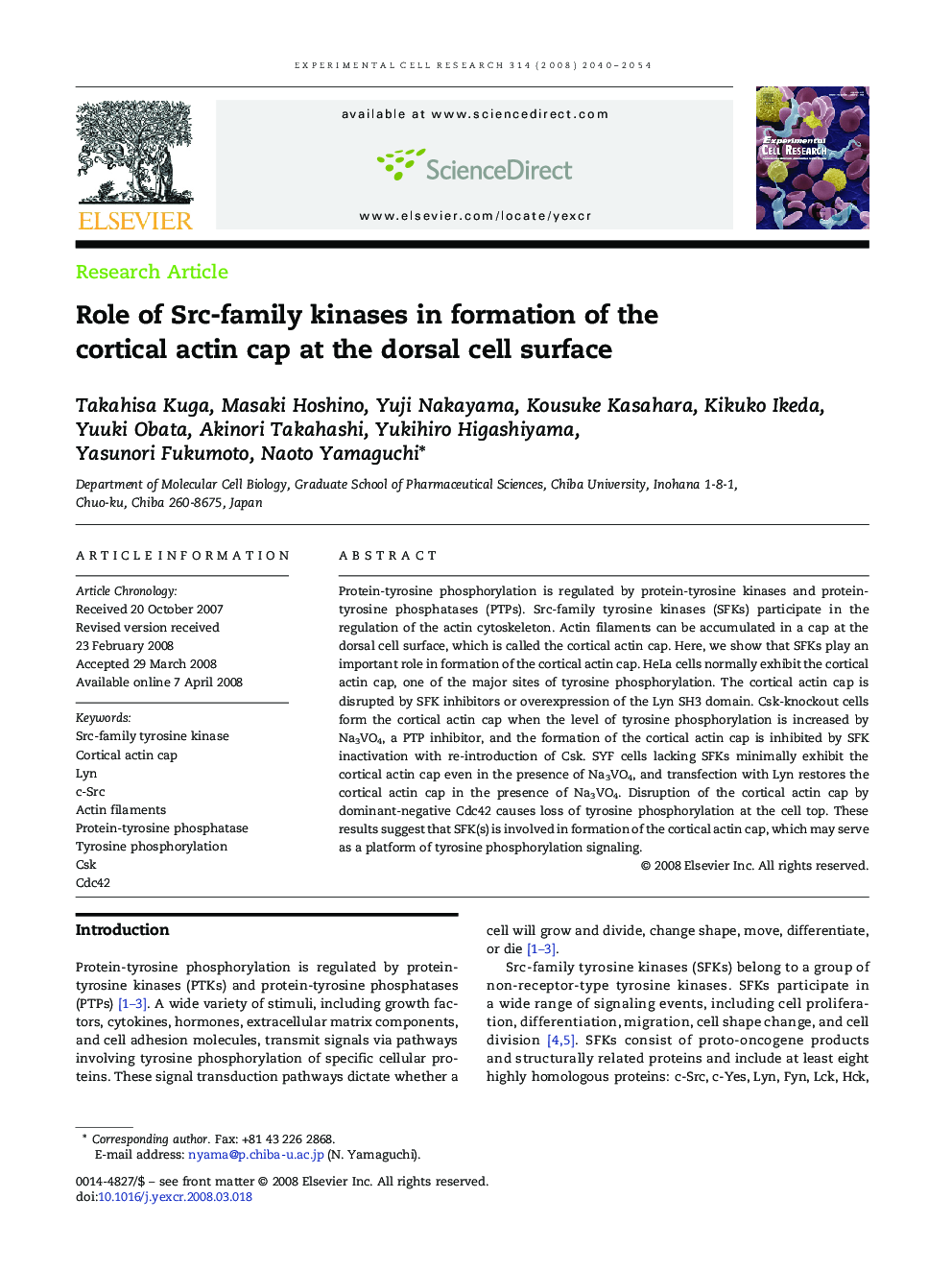| Article ID | Journal | Published Year | Pages | File Type |
|---|---|---|---|---|
| 2132900 | Experimental Cell Research | 2008 | 15 Pages |
Abstract
Protein-tyrosine phosphorylation is regulated by protein-tyrosine kinases and protein-tyrosine phosphatases (PTPs). Src-family tyrosine kinases (SFKs) participate in the regulation of the actin cytoskeleton. Actin filaments can be accumulated in a cap at the dorsal cell surface, which is called the cortical actin cap. Here, we show that SFKs play an important role in formation of the cortical actin cap. HeLa cells normally exhibit the cortical actin cap, one of the major sites of tyrosine phosphorylation. The cortical actin cap is disrupted by SFK inhibitors or overexpression of the Lyn SH3 domain. Csk-knockout cells form the cortical actin cap when the level of tyrosine phosphorylation is increased by Na3VO4, a PTP inhibitor, and the formation of the cortical actin cap is inhibited by SFK inactivation with re-introduction of Csk. SYF cells lacking SFKs minimally exhibit the cortical actin cap even in the presence of Na3VO4, and transfection with Lyn restores the cortical actin cap in the presence of Na3VO4. Disruption of the cortical actin cap by dominant-negative Cdc42 causes loss of tyrosine phosphorylation at the cell top. These results suggest that SFK(s) is involved in formation of the cortical actin cap, which may serve as a platform of tyrosine phosphorylation signaling.
Keywords
Related Topics
Life Sciences
Biochemistry, Genetics and Molecular Biology
Cancer Research
Authors
Takahisa Kuga, Masaki Hoshino, Yuji Nakayama, Kousuke Kasahara, Kikuko Ikeda, Yuuki Obata, Akinori Takahashi, Yukihiro Higashiyama, Yasunori Fukumoto, Naoto Yamaguchi,
